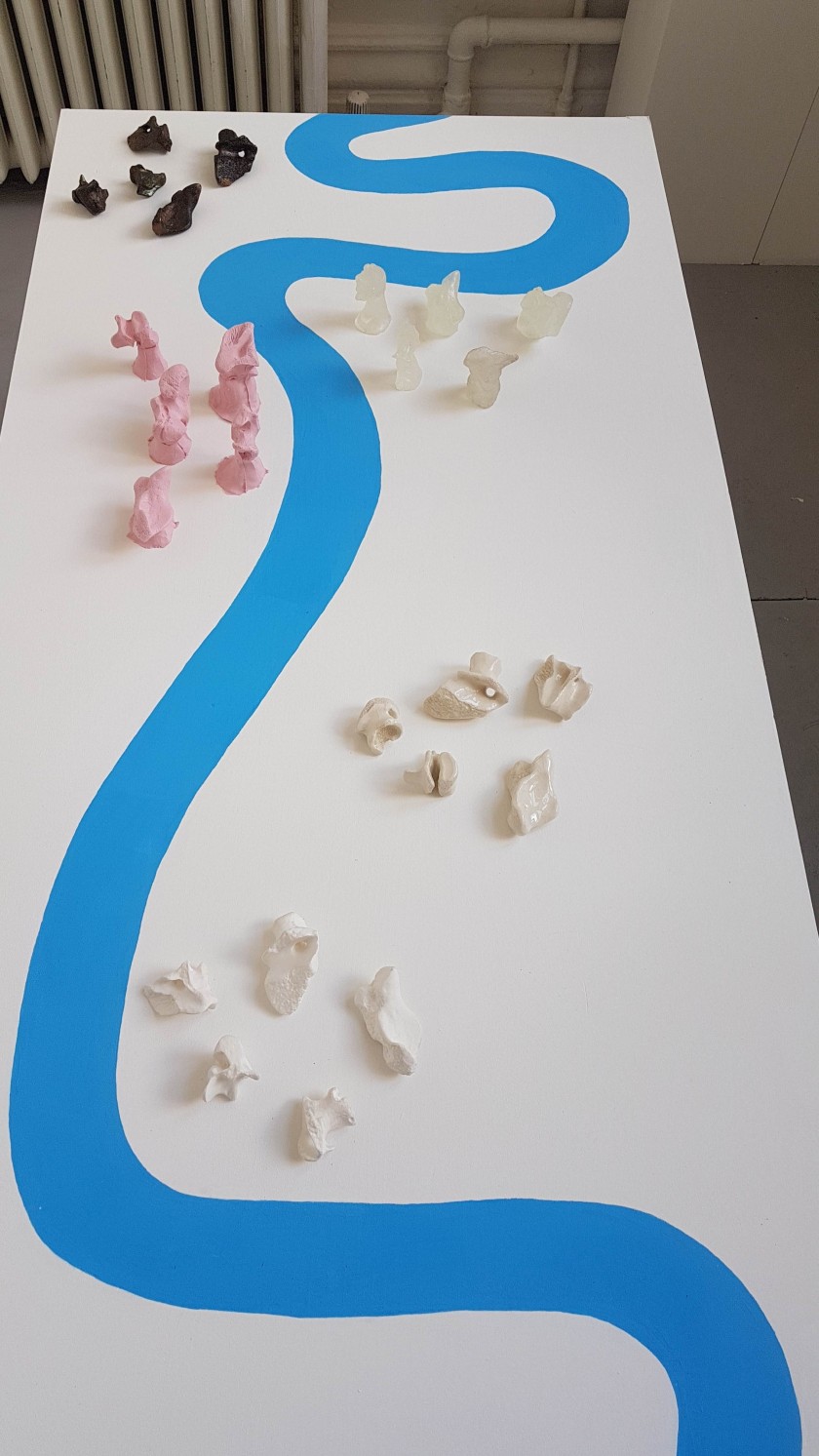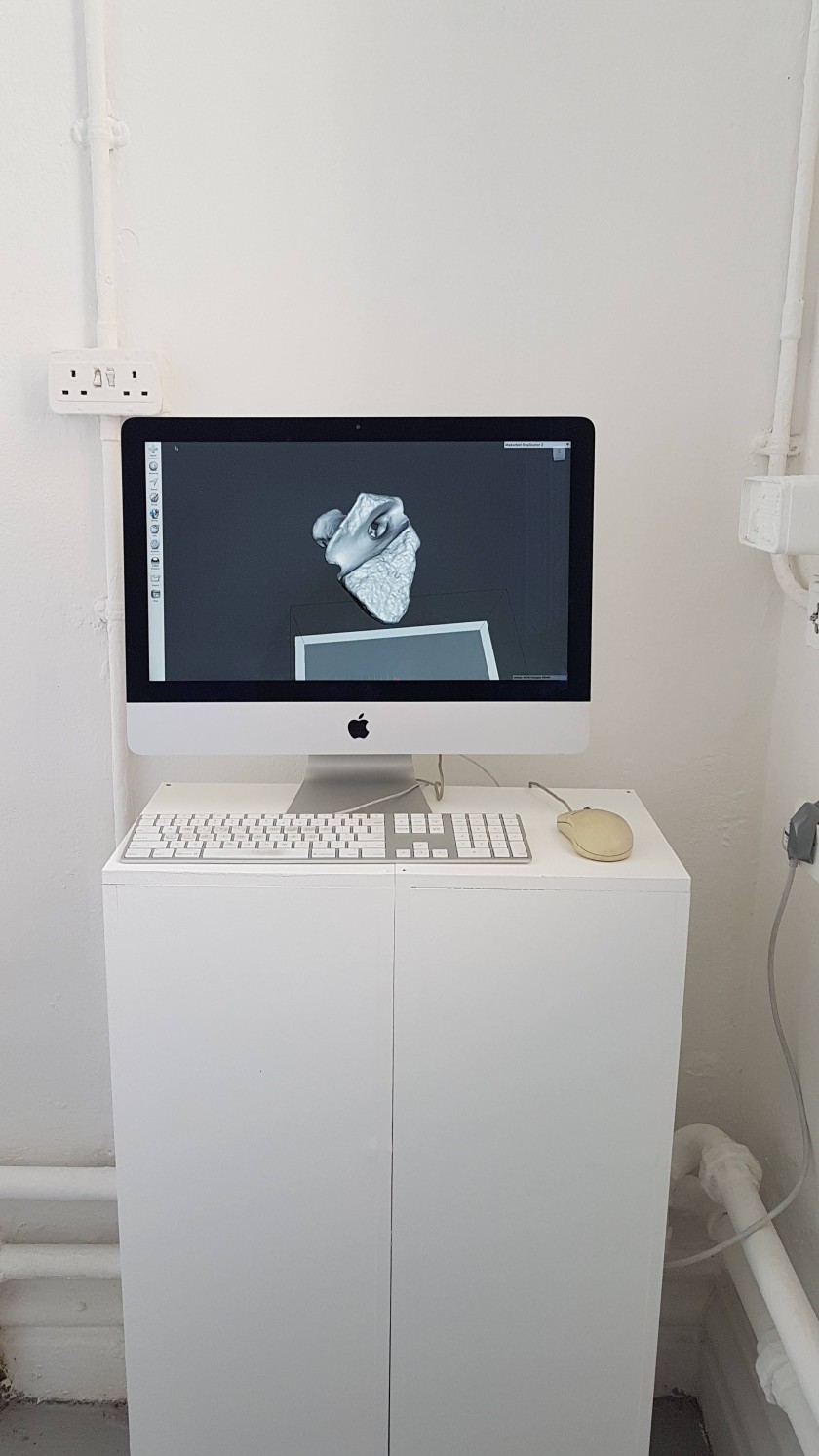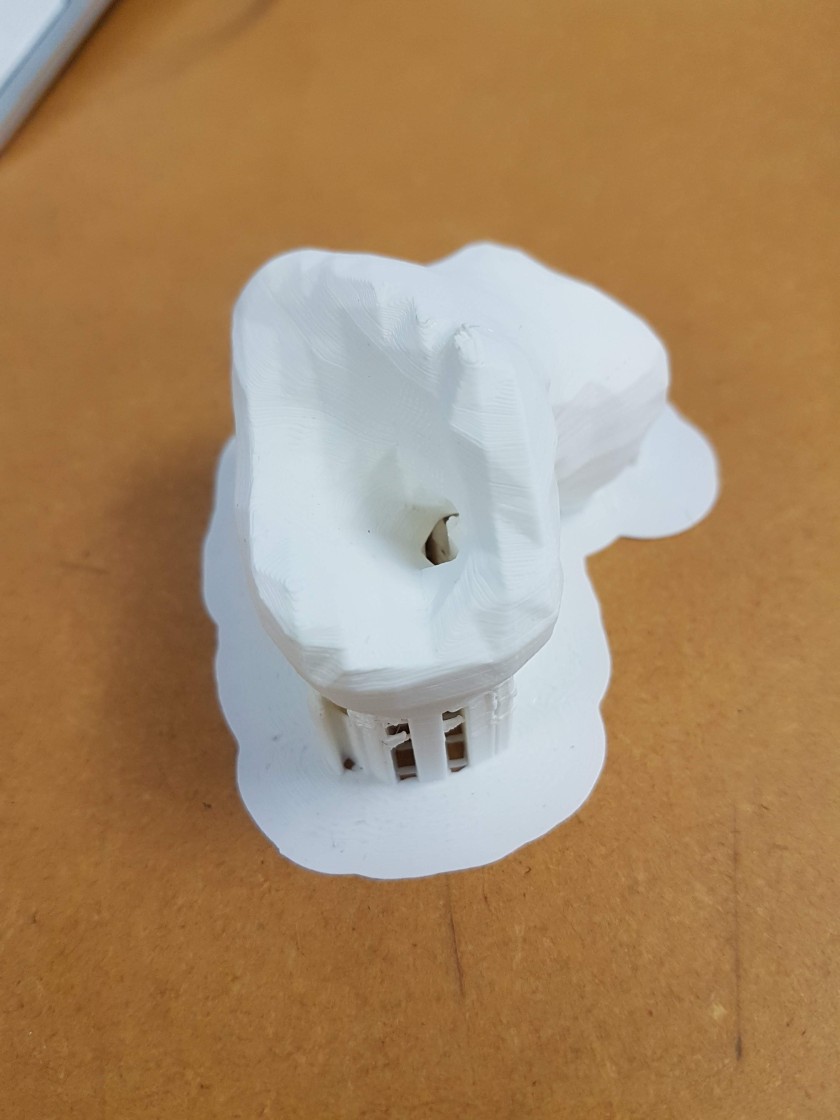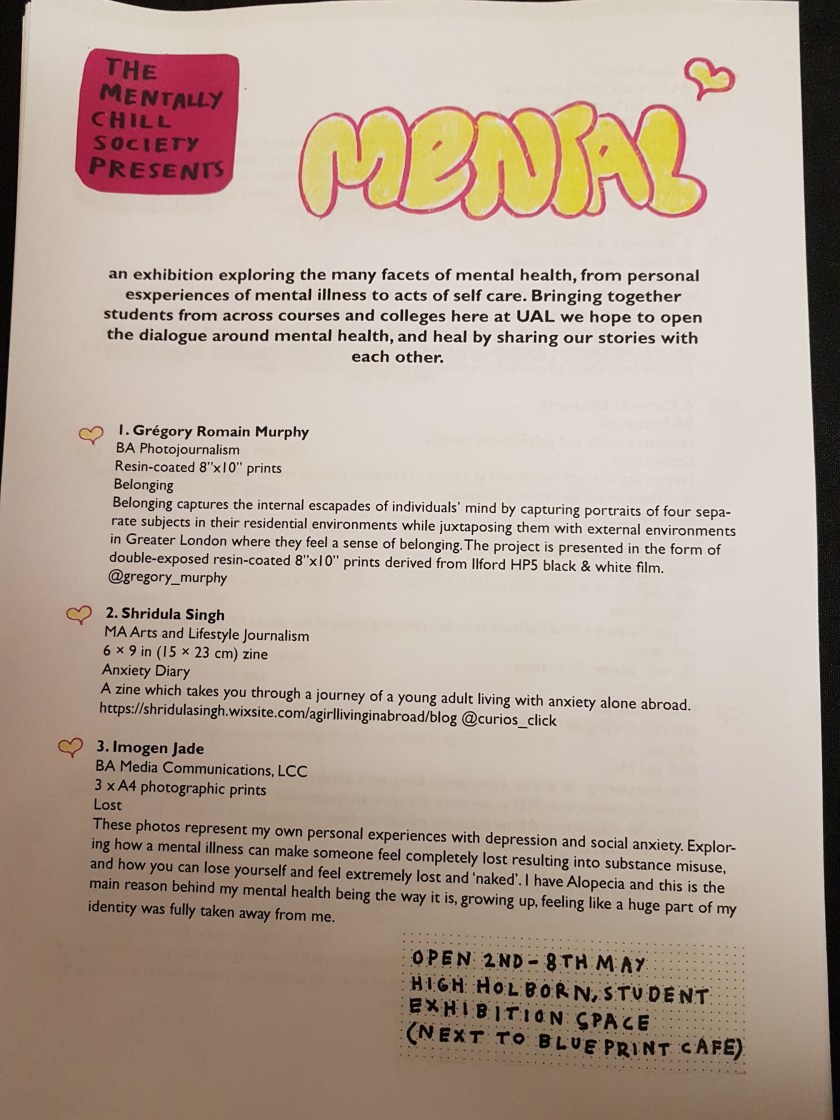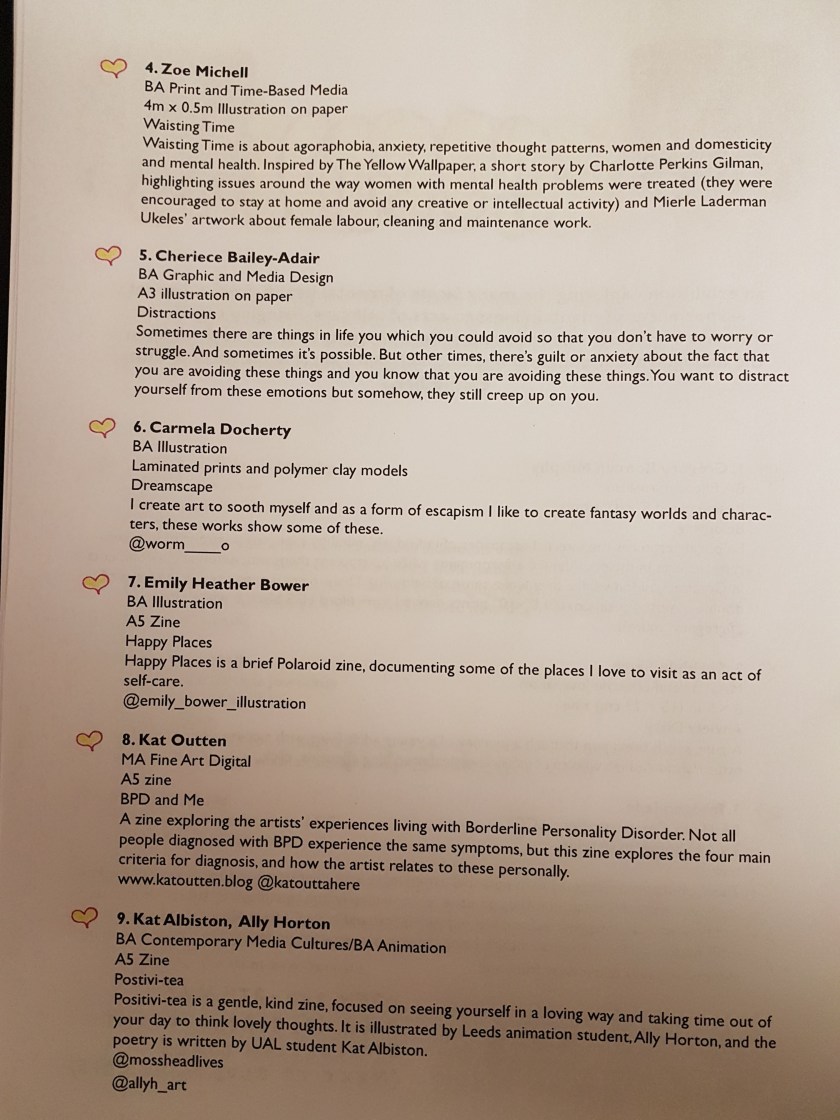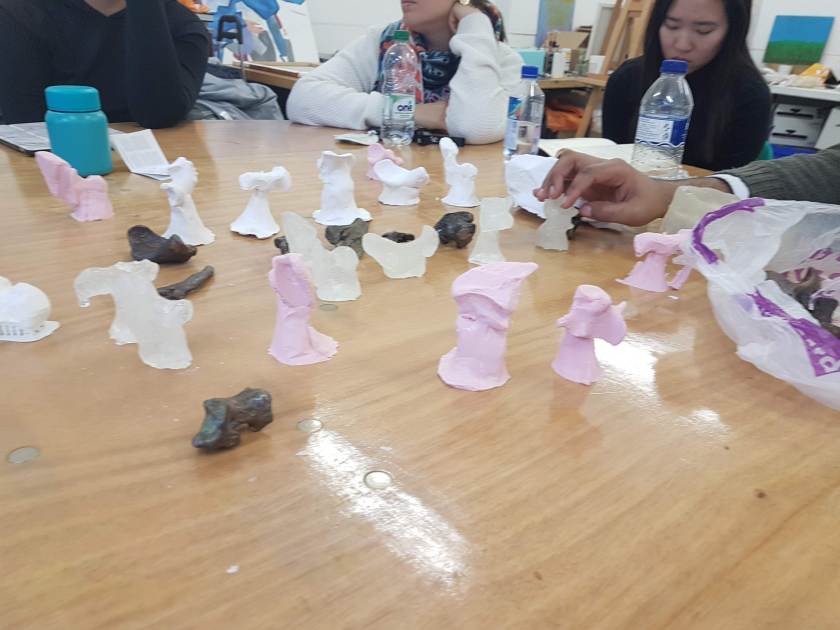Above are the two versions of my Project Proposal- the first I wrote at the beginning of the course, the second in April 2018. Even in the 6 months or so between them you can see how I found a direction, and a project to focus my time and energy on. Although I have done projects outside of my main project that focus on my personal issues as well as wider social issues (i.e. the Fat Bodies Drawing Workshop I ran as Post Grad Ambassador for Camberwell, the BPD and Me Zine, and the exhibition I set up that it was part of, Mental, and other pieces on my blog) I am interested to reflect on the direction my work has taken.
I originally thought my river project was the least personal, and most frivolous, of my project ideas- but it has turned out to be one of the most personal projects I have done, and the largest project I have ever undertaken. I think at first I thought it was just going to be something fun to explore different processes with, and give myself an excuse to use all the workshops and facilities I hadn’t got to use yet; but I realized that I am happiest when I am physically making and that the act of making is a kind of therapy for myself. I also realized that I wanted to make art more accessible, and that my explorations of these different materials could be used to make my work more interactive and accessible. This was a real turning point- as I discovered that my practical work did actually link with my theoretical research after all, and that they could feed off of and inspire each other very naturally, rather than being separate and distinct paths.
My first proposal was convoluted, uncertain, and vague, with the second one having much more of a clear path and direction, which I definitely needed- but first I needed to find that direction, which the first 6 months of the course did for me. I never drafted up another one after that, although I feel you can see my ideas forming and taking shape throughout the posts on my blog- the explorations of materials, the analysis of these materials and ideas, and the research paper all slowly revealed themselves over time and I think you can see this on the blog.
Throughout the last two years I have developed not only as an artist, with all these new processes and techniques I have learnt under my belt, but also as an activist, and as a person. I have become much more confident in myself and my own abilities, to the point where I am no longer held back my anxiety when giving presentations and talking as part of a group (at this point it’s a miracle to get me to shut up!) I managed to get the job as the Post Grad Ambassador for Camberwell the second time I applied- all because even within that first year my confidence had already swelled- and through that role I have used the position to host events (such as the Fat Bodies Drawing Workshop) based on social and personal issues I care about, and have written about these topics for their blog. I also set up my own society focussed on helping students like myself with mental health issues, because I realized one of my passions is helping others, and being an activist for disabled and neurodivergent people. I really attribute a lot of this personal growth and development to this course- being surrounded by such inspiring and supportive individuals who all genuinely care about each others work and lifting each other up really brought me out of my shell, and has made me the outspoken and confident person I have become.
Going forwards I plan on setting up a network for disabled and neurodivergent creatives alongside fellow neurodivergent and disabled artists I have met through my society, as we are underrepresented in the creative industries, and it can feel very isolating- I hope the network will provide a social outlet, as well as being a place we can share resources, tips, connections, and skills through a website and workshops/meetings/ect. I have also been looking at community engagement and school engagement based jobs in art galleries and creative institutions, as I feel I could make a difference to people’s lives through art within these roles. I think that this MA and all of the extra curricular stuff I have been doing will help me to get one of these roles, and I am hopeful for the future. I still want to make art, regardless of what I end up doing; I have been emailing foundries, print making studios, and ceramic studios around London asking for work experience/trainee opportunities/internships and I am hoping that at least one of them will allow me the opportunity to do so, given my experience with so many materials and mediums. I have also been looking at artist awards and residencies I want to apply for, so that I can get some funding and space to make new works.
On top of this I have also started dabbling in more digital art such as making short videos (Like the I Can’t Help the Way I feel, My Fat Body film) and also using 3D programs such as Meshmixer and Blender, as they are free and open source. I will need to eventually save up for a better PC for this, but right now my laptop is good enough. I also have the tools to do linocut and woodcut prints, and a scanner/printer so I can still make print based work, and I have a few small zines planned that I want to make. I bought too much clay in ceramics, so I am considering making smaller scale sculptures and jewelry- there is a ceramics studio in Peckham near to where I work that offers an affordable monthly subscription, so I could potentially fire and glaze anything I make there. They have put me on their waiting list for a training opportunity which would allow me free access to the studios and free reign on their glazes in return for 7 hours of work a week, where I would be trained in how to run a ceramics studio as I work.
If I could have done anything differently I might have tried to come in more often- there were a few weeks and even months here and there where I struggled to get myself in to make work- however looking back on it I can see that these dips corresponded with dips in my mental health, which is something that isn’t always in my control, so I have no regrets. I committed myself fully to this course, and I hope that comes across in my blog, and in the work that I have produced. I only wish I could have afforded to work less hours so that I would not have always been so tired and would have been more productive, but such is the life of a working class artist. I tried my best to overcome my low mood, and for the most part persevered, and although I wish I had more time to spend in some of the workshops I think I have used my time fairly well, and this shows in the body of work I have made.
Overall this course has not only taught me more about the art world and all o the mediums I have learnt to utilize, it has taught me more about myself as person, and what I am passionate about and enjoy doing, which is incredibly value. I joined this MA so unsure of myself, my abilities, and my art, and now I feel like I really know myself and what I am capable of, and it is so so much more than I imagined. I just want to say how grateful I am to Jonathan and to my classmates for encouraging me to be my most authentic self, which is something I never thought was possible.

